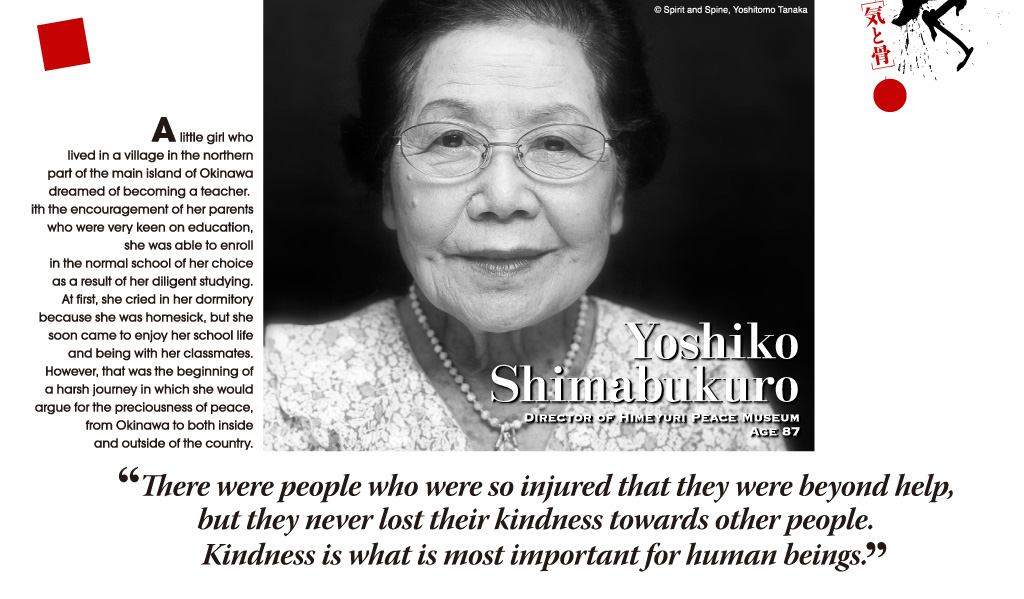Shiraume, Zuisen, Deigo, Sekitoku, Nagoran, Himeyuri. Centered in the south, there are memorial monuments dotted around for the female student corps who were mobilized to nurse the sick and wounded army soldiers in the Battle of Okinawa, and died in the war. A number of the engraved names stand out, including those of the students from the Okinawa Women’s Normal School and the Daiichi Women’s High School in the Himeyuri female student corps. There were 123 of them, who were in their late teens, as well as 87 names of those that weren’t in the corps and 16 names of teachers.

After the war, when she finally became the teacher she’d always longed to be, not only was there no school building or blackboards, they didn’t even have any pencils. Because of an injury she used her left hand to write on the ground in her lessons, but seeing the sparkle in the eyes of the children that had survived made her feel it was all worthwhile. However, every day in her teaching life she felt a deep, dark remorse for her schoolmates whose dreams hadn’t come true. She continually experienced survivor’s guilt regarding those girls and their bereaved families. As time passed, and she became the class teacher for students born after the war, she found that she wasn’t able to tell them about her experiences.
What changed it all around was when she and her schoolmates in their mid-fifties went into the underground shelters to gather together their school friends’ remains and possessions. At the memorial service before the Buddha for her deceased friends, as she told more and more stories to the bereaved families while apologizing, surprisingly she received words of gratitude and encouragement. She decided that she would teach others about her Himeyuri experiences, as a way to commemorate those girls’ existence. She gave up her job to participate in making a museum, and since then has worked on gathering testimonies of personal experiences and creating materials to exhibit. Despite her gentle persona, she is unbelievably strong willed with a deep sense of responsibility, and she continues to be a torchbearer for prayers for peace.

Yoshiko Shimabukuro
Born in Motobu in 1928. Her older brother and older sister were both killed in action at the Battle of Okinawa. Her mother had difficulty with walking and her father suffered serious injuries that nearly killed him too. She was appointed director of the Himeyuri Peace Museum in 2011.
Cooperation: Himeyuri Peace Museum, Chairwoman of South Okinawa’s Family RINRI Association, Hitomi Inafuku, Tomigusuku’s Family RINRI Association, Emi Nagamine
Translation: Media Research, Inc.





































































































